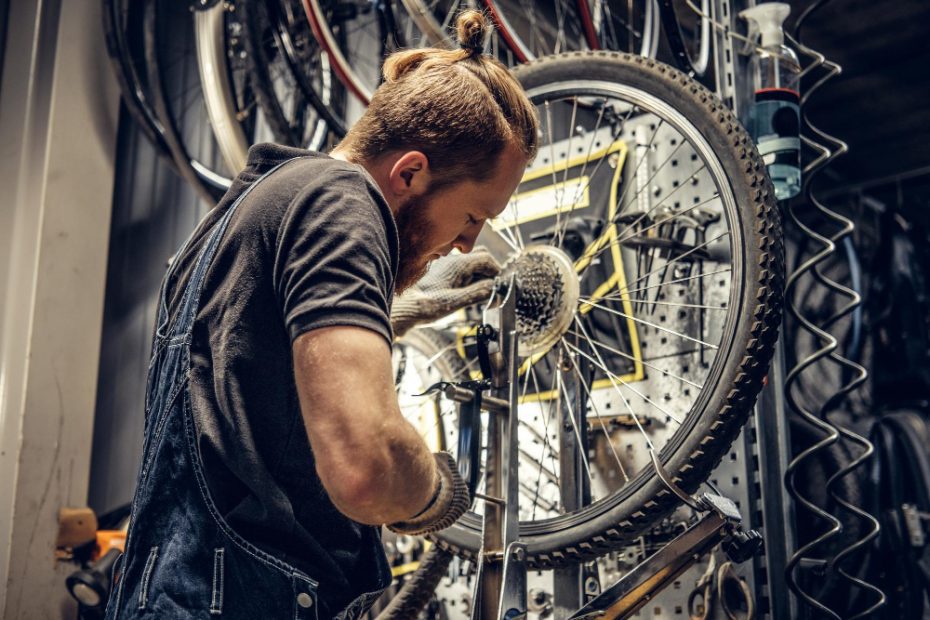How much does a bike puncture repair cost?
Whether you’re an avid cyclist or simply use a bike for commuting, the last thing you want to encounter is a puncture. A flat tire can quickly ruin your plans and leave you stranded. But don’t worry, getting your bike’s puncture repaired doesn’t have to break the bank. In this article, we’ll explore the average cost of bike puncture repairs in the UK.
The average cost of a bike puncture repair
It’s important to note that the cost of a bike puncture repair can vary depending on several factors, including the region, the type of bike, and the severity of the damage. On average, you can expect to pay between £10 and £20 for a basic puncture repair at a local bike shop.
In most cases, the repair cost covers the replacement of the inner tube, labor costs, and any additional small parts like patches or rim tape if necessary.
If you’re comfortable performing the repair yourself, you can save money by purchasing a puncture repair kit, which typically costs around £5 to £10. These kits usually include all the necessary tools and materials to fix a punctured tube, making it a cost-effective option for those with some mechanical skills.
Factors that can affect the cost
The cost of a bike puncture repair can vary depending on a few key factors:
- Type of bike: Different types of bikes may require different tubes, tires, or repair methods, which can affect the overall cost.
- Severity of damage: Minor punctures can often be repaired with a simple patch, while more severe damage might require a new inner tube or even tire replacement, increasing the cost.
- Location: Bike repair prices can vary across different regions and cities in the UK.
Tips for reducing puncture repair costs
If you want to keep your bike puncture repair costs to a minimum, here are a few tips:
- Maintain your tires: Regularly check your tire pressure and ensure they are properly inflated to minimize the risk of punctures.
- Invest in puncture-resistant tires: Upgrading to puncture-resistant tires can reduce the frequency of flats and lower your long-term repair costs.
- Learn basic bike maintenance: By learning how to fix a punctured tube yourself, you can save money on labor costs and be self-sufficient on your rides.
In conclusion
While the cost of a bike puncture repair can vary, the average price in the UK ranges from £10 to £20 for a basic repair. By considering factors such as bike type, severity of damage, and location, you can better estimate the potential costs. Remember, investing in proper maintenance and learning basic repair skills can help you reduce the frequency of punctures and cut down on repair costs in the long run.
Why is my bike TYRE going down without a puncture?
1. Incorrect tire pressure
One of the most common reasons for a bike tire going down without a puncture is incorrect tire pressure. If your tire is not inflated to the recommended pressure, it can slowly lose air over time. Use a pressure gauge to check the recommended PSI for your bike’s tires, and make sure to inflate them regularly.
2. Valve issues
An issue with the valve can also cause a bike tire to go down without a puncture. Check that the valve is properly secured and not leaking air. If necessary, replace the valve or use a valve adapter if the valve type is incompatible with your pump.
3. Rim tape damage
Rim tape is a protective strip that covers the spoke holes in the rim. If the rim tape becomes damaged or worn out, it can cause air to escape slowly, resulting in a flat tire. Inspect the rim tape for any signs of wear and tear, and replace it if necessary.
4. Tube or tire damage
Even without an obvious puncture, there might be small cuts or tears in the tube or tire that can cause a slow leak. Carefully inspect both the tube and tire for any signs of damage. If you find any, replace the tube or tire accordingly.
5. Poor bead seating
If the tire bead is not seated properly on the rim, it can result in a slow leak. Make sure the tire bead is evenly seated around the entire circumference of the rim. You can use tire levers to ensure proper seating if needed.
6. External factors
Sometimes, external factors such as debris, thorns, or sharp objects on the road can cause your bike tire to slowly lose air. Inspect the tire carefully for any foreign objects embedded in the tread. Remove any obstructions and consider using puncture-resistant tires for added protection.
7. Inner tube degradation
Over time, inner tubes can degrade and become more porous, leading to air loss. If you’ve checked all other possible causes and still experience deflation, it might be a sign that the inner tube needs replacement.
8. Weather fluctuations
Extreme temperatures or weather fluctuations can affect tire pressure. Cold weather, for instance, can cause the air in your bike tires to contract, resulting in lower pressure. Keep this in mind and adjust your tire pressure accordingly.
9. Improper installation
If the tire or tube was not correctly installed, it can lead to air leakage. Make sure you follow the proper installation procedures when replacing a tube or tire to prevent this from happening.
10. Aging tires
As tires age, they can become more prone to air loss. If you’ve ruled out all other potential causes and your tire continues to go down without a puncture, it may be time to consider replacing the tire altogether.
Remember: Proper maintenance and regular inspections are essential to keep your bike tires in good condition and prevent unexpected deflation.
What to do about a slow puncture on your bike?
Identifying a slow puncture
- If you notice that your bike tire loses air over time or feels softer than usual, you may have a slow puncture.
- Another indication is if you hear a hissing sound when pressing on the tire.
Temporary solutions
If you are in a bind and need a quick fix, you can try the following:
- Check for debris: Inspect the tire carefully for any sharp objects, such as glass or thorns, that may be causing the puncture. Remove them if found.
- Use a puncture repair kit: These handy kits usually come with patches and adhesive. Clean the affected area, apply the patch, and wait for it to dry before reinflating the tire.
Permanent solutions
While temporary fixes can get you by, it is advisable to seek professional help for a long-lasting solution. Here’s what you can do:
- Visit a bike shop: Take your bike to a reputable bike shop where a technician can assess the problem and recommend the best course of action.
- Tire replacement: If the puncture is severe or the tire is worn out, it may be time for a new one. Ask the technician to help you choose a suitable replacement.
If you’re unsure about fixing the puncture yourself, it’s always better to consult an expert who can ensure your safety and the durability of your repairs.
Taking preventative measures
Once you’ve fixed your puncture, there are steps you can take to minimize the chances of it happening again:
- Regularly check your tire pressure: Keeping your tires properly inflated reduces the risk of punctures.
- Consider puncture-resistant tires: Investing in tires with additional protective layers can provide added peace of mind.
Can I ride a bike with a puncture?
Having a puncture can be frustrating and inconvenient when you’re eager to go cycling. However, it is possible to ride a bike with a puncture, depending on the severity of the damage.
Minor Puncture
If you have a minor puncture, you may be able to continue riding for a short distance at reduced speed and pressure. This can be a temporary fix to get you home or to a repair shop. Keep in mind that riding with a puncture can potentially cause further damage to your tire, rim, or even the inner tube.
Major Puncture
In the case of a major puncture with a completely flat tire, it is not recommended to ride your bike. Riding with a flat tire can lead to further damage and increase the risk of accidents or injuries. It’s important to assess the severity of the puncture before deciding whether to ride or not.
Repairing a Puncture
If you decide to ride with a puncture, remember to repair or replace the inner tube as soon as possible. Continuing to ride on a damaged tube can cause more flats and compromise the integrity of your tire. Additionally, riding with an improperly inflated tire can affect the bike’s handling and stability, making it unsafe to ride.
The cost of repairing a bike puncture can vary depending on several factors such as the type of bike, location, and the complexity of the repair. On average, a puncture repair can cost around £10-£20, including the labor and replacement inner tube if needed. However, it’s always wise to check with your local bike shop for specific pricing information.
Remember, prevention is always better than cure. Taking proper care of your bike tires, such as regularly checking their pressure and avoiding rough terrains, can help reduce the chances of getting a puncture. Additionally, having a small repair kit with you during rides can be a lifesaver in case of emergencies.
To summarize, riding a bike with a puncture is possible in certain situations, but it’s generally best to avoid doing so to prevent further damage and ensure your safety. Getting your bike repaired professionally or replacing the inner tube promptly is recommended to maintain the optimal performance of your bicycle.
How common are punctures on road bikes?
Introduction
Punctures are an unfortunate reality for road bike riders, and they can be both frustrating and time-consuming. In this article, we will discuss how common punctures are on road bikes and provide some tips to avoid them.
Frequency of Punctures
Road bike riders are more susceptible to punctures compared to other types of cyclists. This is primarily due to the high pressure and narrow tires used in road bikes, making them more vulnerable to sharp objects on the road. On average, road bike riders experience punctures around once every 1,000 to 3,000 miles, depending on factors such as riding conditions, tire quality, and maintenance practices.
Causes of Punctures
There are several common causes of punctures on road bikes. These include:
- Sharp objects: Glass, thorns, nails, and other debris can puncture the tire.
- Tire wear: Over time, the tread on the tire becomes thinner, increasing the risk of punctures.
- Underinflated tires: When tires are not properly inflated, they are more susceptible to pinch flats or punctures.
- Incorrect installation: Improperly installed tubes or tires can lead to punctures.
Avoiding Punctures
While punctures are difficult to completely eliminate, there are steps riders can take to minimize the risk:
- Regularly inspect your tires: Check for any signs of wear or debris stuck in the tread.
- Maintain proper tire pressure: Keeping your tires inflated to the recommended pressure can help prevent pinch flats and reduce the risk of punctures.
- Choose durable tires: Opt for puncture-resistant tires with reinforced sidewalls for added protection.
- Use tire liners or sealant: These can provide an extra layer of defense against punctures.
Expert tip: Applying a thin layer of talcum powder on the inner tube can reduce friction and potentially prevent punctures caused by pinching.
Conclusion
A slow puncture on your bike can be a hassle, but with the right approach, you can address the issue effectively. Whether opting for temporary repairs or seeking professional assistance, it’s important to prioritize your safety and the longevity of your bike’s tires.
Punctures are a common occurrence for road bike riders, but by taking preventative measures such as regular tire maintenance, proper inflation, and using durable tires, you can significantly reduce their frequency. Remember, despite these precautions, it is important to be prepared with the necessary tools and knowledge for quick roadside repairs in case a puncture does happen.


